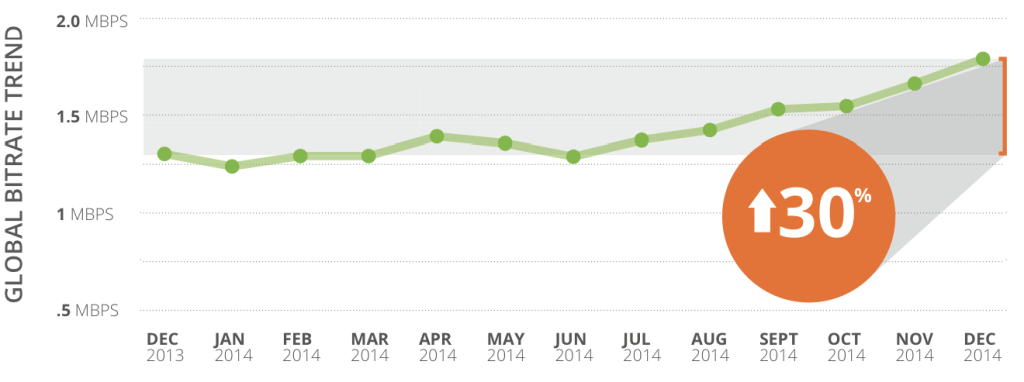New Data Shows Networks Will Struggle To Stream 4K With Good Quality For Years To Come
Last week, Conviva released their annual Viewer Experience Report which provides details on the quality of video delivered from the 50 billion streams across 180 countries that Conviva monitored in 2014. While the market for video consumption continues to grow, both in viewers and in the revenues flowing in and out, the quality of that video being delivered is now starting to experience real growth pains.
At the same time, Conviva notes that re-buffering of video didn’t really improve in 2014, which is disappointing, when compared to their data from the year before. (Data: 2012, 2013) Re-buffering impacted 28.8% of all the streams they measured, down from 39.3% in 2012. On the other hand, the number of initial play failures dropped like a rock so more viewers are getting into their content, as they should, but now the challenge is for providers to deliver on the promise of delivering a consistent quality video experience all the way from start to finish.
Picture resolution is going up rapidly, Conviva identifies 30% increase in average bit rate from 2013 to 2014, although they point out that the picture varies wildly from country to country. The key take away though is that while the 30% number sounds big, it’s not. Across all of the 50 billion streams Conviva measured in 2014, the average bitrate was only 1.46Mbps.
 I’ve been very vocal about the overwhelming challenges of 4K streaming and this report is just one more piece of data that proves just how far away 4K streaming is from major adoption. [See: The Adoption Of 4K Streaming Will Be Stalled By Bandwidth, Not Hardware & Devices] The average bitrate delivered in the U.S. in 2014 was UNDER 2Mbps. The average 4K streaming bitrate is today is 8x that. Even with HEVC and better compression, networks are going to struggle to stream 4K video for a long time to come. There’s plenty to do for the infrastructure players here, as well as the broadcasters, and a lot of money that will need to be invested if they truly want to support 4K streaming with a quality user-experience.
I’ve been very vocal about the overwhelming challenges of 4K streaming and this report is just one more piece of data that proves just how far away 4K streaming is from major adoption. [See: The Adoption Of 4K Streaming Will Be Stalled By Bandwidth, Not Hardware & Devices] The average bitrate delivered in the U.S. in 2014 was UNDER 2Mbps. The average 4K streaming bitrate is today is 8x that. Even with HEVC and better compression, networks are going to struggle to stream 4K video for a long time to come. There’s plenty to do for the infrastructure players here, as well as the broadcasters, and a lot of money that will need to be invested if they truly want to support 4K streaming with a quality user-experience.
Notes: While not detailed in the report, Conviva said about 60% of the 50 billion streams they monitored came from the U.S. and all of the video content delivered was from broadcast, media and entertainment owners, for both live and on-demand streaming.
